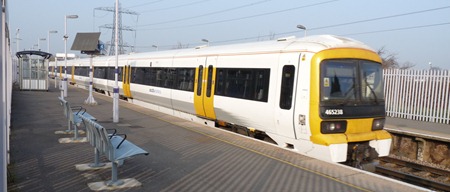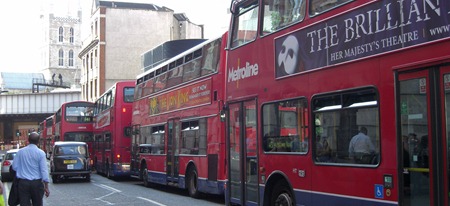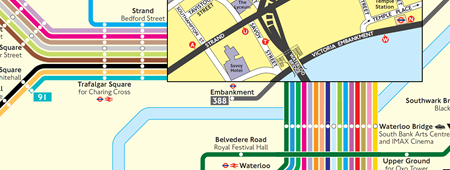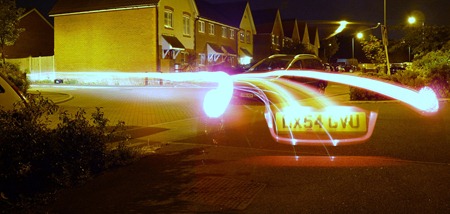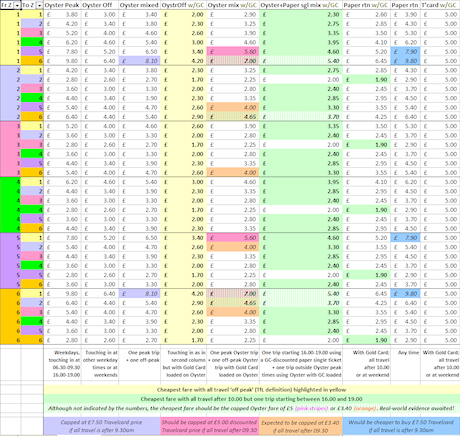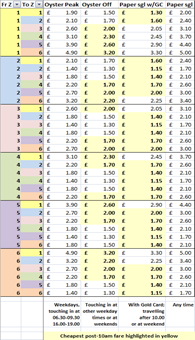Yes, this blog shut down nearly three years ago when I moved away from Bexley, but I have revived it to publish some interesting local transport news: TfL are consulting on the introduction of a Sunday service on the B12 bus route. (Update, 19 April 2013: the service will now go ahead as suggested, starting on 28 April.)
We are proposing to introduce a Sunday service to run every 30 minutes throughout the day on route B12. This would provide a new service on Sundays for Joydens Wood, Coldblow, and parts of Northumberland Heath with links to Bexleyheath and a number of railway stations. The route would run clockwise round the Joydens Wood loop before noon and then anticlockwise as on other days of the week.
The B12 currently runs every 20 minutes Monday to Saturday during the day, and every 30 minutes Monday to Saturday in the evening.
These proposals have been developed because of stakeholder and passenger requests for a Sunday service, including requests from Bexley Council and Kent County Council.
For a long time, that’s not a sentence I had been expecting to be able to write, particularly under a Mayor whose stated plans for the bus service are merely to preserve overall mileage (i.e. not to expand bus services in the way that was done under his predecessor).
So how did this come about? It’s a long but pleasing tale of all the right pressure being brought to bear by all the right people, with perhaps a hint of cunning in the mix.
I don’t have any inside knowledge, other than from attending the London Borough of Bexley’s quarterly public transport sub-committee as a public observer, but this is the story as I understand it.
Pushing the boundaries
For many years, under pressure from local campaigners, and indeed out of transport planners’ desire for logical public transport, Bexley had been calling on TfL to add a Sunday service to the route, which is the only one in their borough which doesn’t run on Sundays.
The small south-eastern ‘loop’ part of the B12 route is mostly just inside Kent, across the greater London boundary. This is fairly common for TfL routes at the edge of the capital, and is a sensible acknowledgement that Londoners do occasionally need to travel slightly outside (and indeed it’s nice to be able to bring people from just outside to come and spend money in London businesses etc.).
The absolute best TfL said they could do for a long time, therefore, was offer a very small amount of budget towards operating a Sunday service, but Kent County Council would need to find the remaining majority of the money needed.
This unlikely proposition wasn’t actually dismissed out of hand by Kent. The councillors there apparently have a small budget that they can use in a way they personally see fit (subject to some sort of scrutiny, I’m sure!). Councillors there agreed that his budget could be used to fund the B12 Sunday service – hooray! So it happened then, right? No.
The Kent councillors’ budget could only be guaranteed for a period of two years. (After all, which bit of any council budget can be guaranteed for much longer than that at the moment?) And two years simply wasn’t good enough for TfL.
For service changes, TfL apparently require a minimum of five years’ guaranteed budget. In the context of an organisation headed by a Mayor elected for four-year terms, this seems somewhat surprising, but there it is. With only two years’ guaranteed funding, TfL wouldn’t be able to introduce the B12 Sunday service (even rejecting a suggestion that they do it on a clearly publicised two-year ‘trial basis’), and that was the end of that.
Bus diversion: the 429
There’s an interesting diversion from the main story here, which was, I thought, an amusingly clever response from Kent to TfL telling them their two years’ worth of money wasn’t good enough.
The part of Kent which the B12 serves – Joydens Wood – is also served by a Kentish bus which similarly didn’t operate on Sundays, the 429.
When TfL refused to use the Kent councillors’ money to provide a Sunday service connecting Joydens Wood to London, the councillors took their money and used it to fund a Sunday service on the 429 instead, essentially saying to TfL, “OK, if you don’t want our money to provide benefit to lots of your residents and businesses and a few of our residents, we’ll use it to help all those same residents on our side of the boundary but none of yours.”
Sure enough, when writing this post, I’ve found the 429 timetable now has a Sunday service for the first time, connecting Joydens Wood residents with Dartford and Swanley town centres, and Bluewater shopping centre. The route operator’s Facebook page announced this in November as follows:
Good news for all our friends on route 429; in partnership with Kent County Council we will be trialling a Sunday service from 18th November. […] Tell your friends; it’s on a use it or lose it basis.
It’ll be interesting to see how many use it, or whether they lose it – especially in light of the new TfL proposals…
Playing the shame game
Back on the subject of the B12, despite the apparently fatal setback, Bexley’s transport planners had another idea up their sleeves.
In 2011, Bexley Accessible Transport Scheme (BATS) had become the first community transport organisation to be awarded a London Service Permit by TfL, allowing them to run a special bus service, route 938.
LB Bexley worked up a proposal with BATS for the organisation to run a Sunday service on the B12. It was a full, detailed proposal, covering exactly how it would work, types of ticket accepted, and expected subsidy required. Lots of thought and development went into it, demonstrating just how serious the local community and council were about wanting a Sunday service on the B12.
The service proposed was not a full one, and only covered about half the B12 route, running just between Bexleyheath and Joydens Wood, but it was intended as a ‘better than nothing’ offering – an hourly service, which if I recall correctly would only have run during shopping hours.
It was calculated how much subsidy this community-run service would need, and the proposal was submitted to TfL for their response on the subjects of a permit and the subsidy needed.
What actually appears to have happened, though – and I am reading between the lines here – is that on seeing just what lengths the council and community were prepared to go to, just to pull together what would have undoubtedly been a substantially lower-specified Sunday service than a standard TfL offering, TfL felt shamed into stumping up the estimated £80,000-a-year cost of introducing a proper Sunday service themselves.
I’m not sure what the subsidy BATS were asking for was, but I guess a calculation was done that more value would be had from simply paying up the full amount for a full service than paying part of it for a substantially lower frequency service covering far less of the day. So, suddenly, everything changed.
No direct response by TfL to the BATS B12 proposal was forthcoming; instead, responses from TfL at (and between) Bexley’s transport sub-committee meetings changed from the previous strong negativity about a B12 Sunday service to intimations and hints that there would be very good news ‘soon’. Not in relation to the BATS proposal, but rather as a full service – exactly what had been sought all along.
Whether Bexley’s transport planners had in fact worked up the BATS proposal in the hope of ‘shaming’ TfL into doing the right thing, we may never know, but if TfL had been hoping it wasn’t a serious campaign for a Sunday service and would just go away if they kept saying the money wasn’t there, the BATS proposal certainly called their bluff very effectively.

Buses don’t stop here on Sundays – but they soon will!
Negotiated settlement
Perhaps as a sign of the straitened times TfL now operates in, the phase in which they repeatedly hinted at an imminent good announcement lasted a very long time – something like six to nine months. From what TfL were saying, a lot of this time was spent negotiating with the bus operator, probably trying to squeeze down that estimated £80,000 (which was, after all, the response to an FOI request in the context of them not providing the service, so would presumably have been made as high an estimate as they could realistically state!).
The next Bexley transport users’ sub-committee meeting is next week, and what has finally emerged one week before that? The consultation on introducing a full Sunday service on the B12 bus route, which I’d encourage everyone reading this to respond to very positively!
I use the B12 bus route to visit my parents, who live just outside greater London, 10-15 minutes’ walk from the furthest point of the Kentish B12 loop. It’s my mum’s birthday on the proposed launch date of the new service, 28 April 2013, so I know how we’ll be arriving at her house now. Thanks to everyone involved in this for their work in bringing her this very welcome bonus birthday present!
Update: the consultation closed on 17 April. On 19 April 2013, TfL published the results as follows:
We received a total of 109 responses, 107 of which were submitted online, 1 response came via email, and 1 response was sent in the post. Of these responses 106 were in favour of the proposal, 2 responses were against the proposal, and 1 respondent did not answer.
After considering all the responses, which were overwhelmingly in favour of the proposals, we are now intending to introduce a Sunday service on route B12 to run every 30 minutes from Sunday 28 April 2013.
Their full consultation summary and response is here (PDF).
Filed under: News, Transport | Leave a comment »





